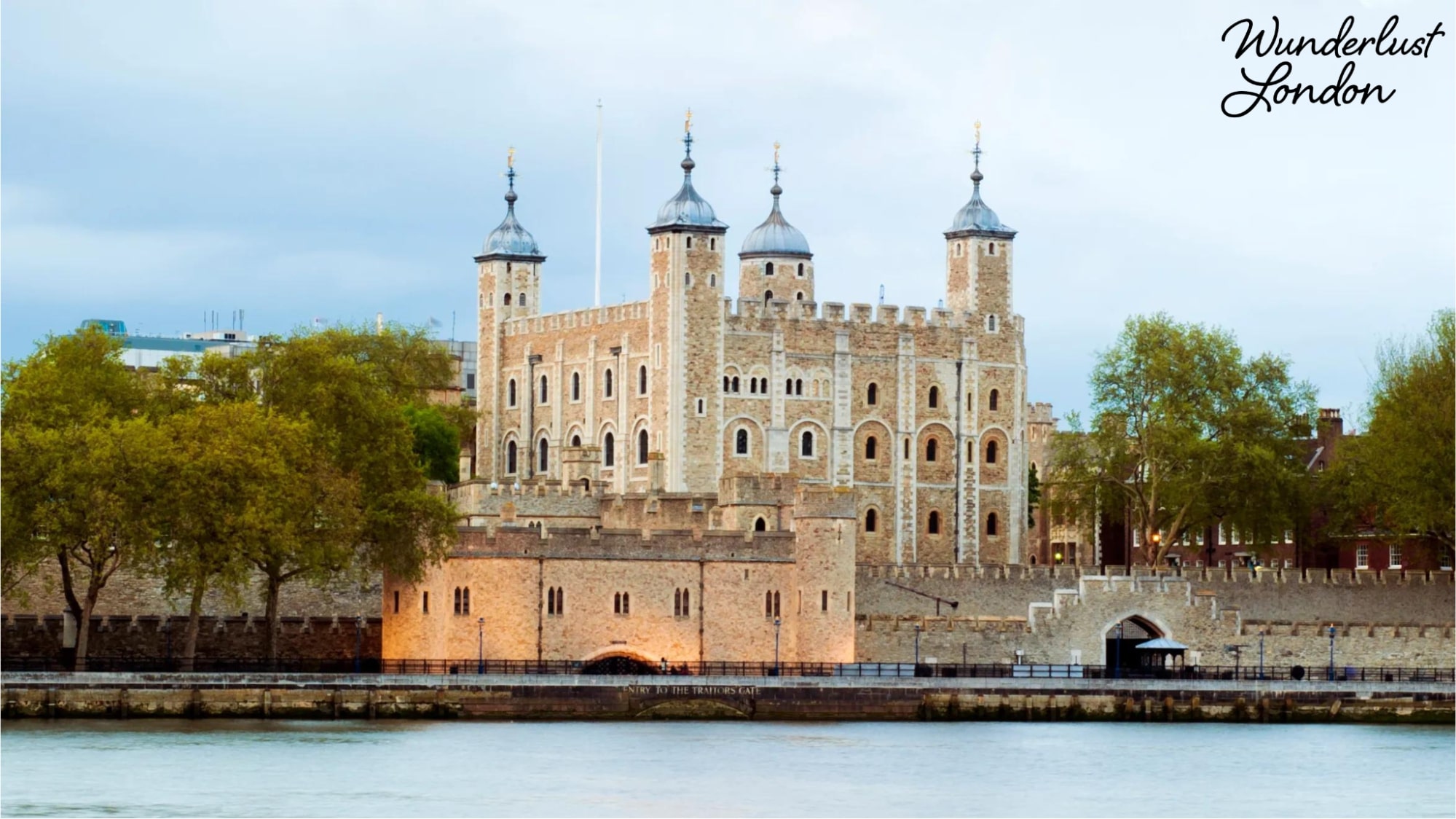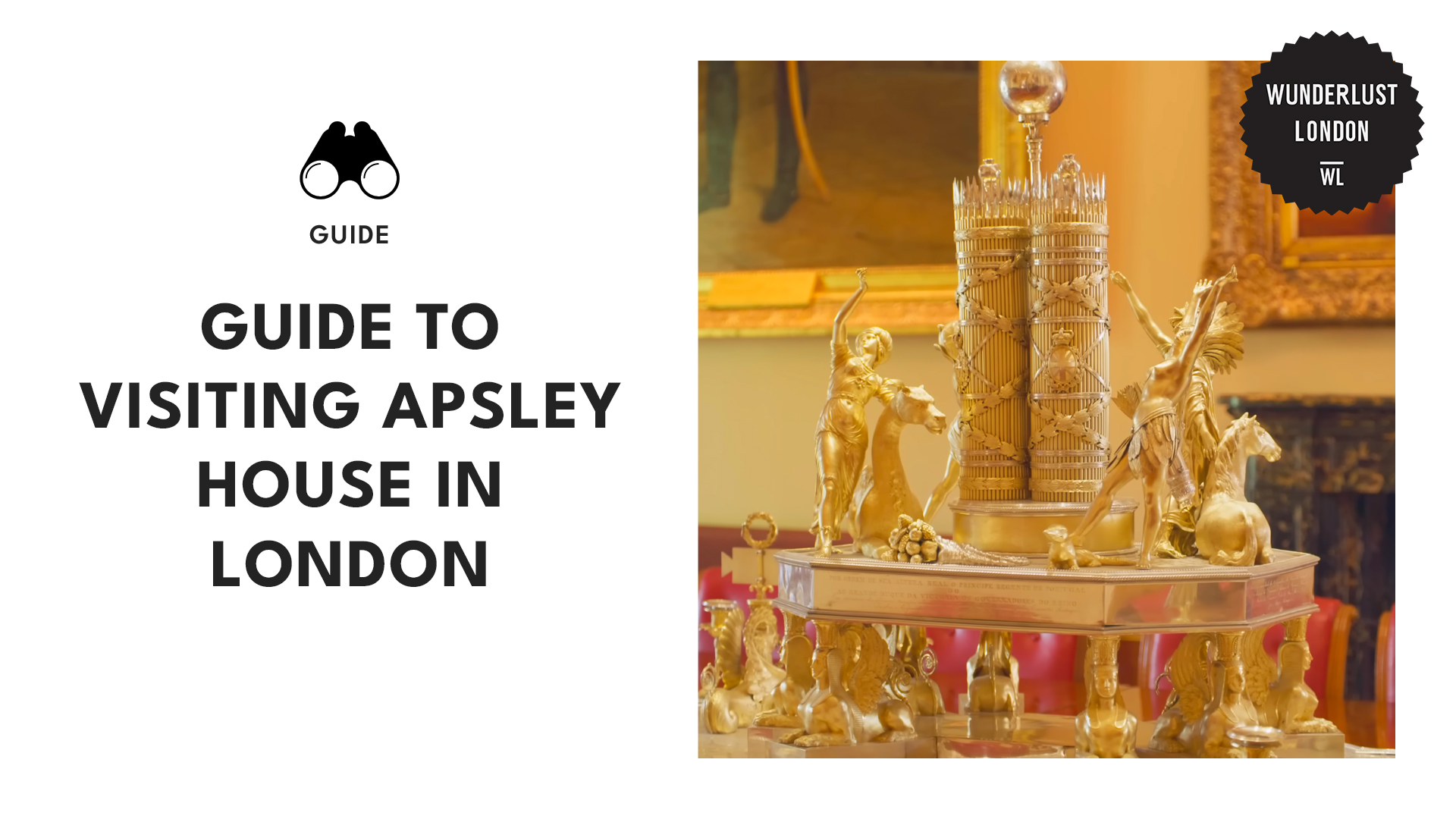The Tower of London is an iconic jewel in the crown of London’s history and an entry on every explorer’s checklist when visiting our capital. But hold tight, because beyond its formidable façade, there’s a world of secrets concealed within these ancient walls.
Today, we’re your keyholders to the mysteries of London’s renowned fortress – from chilling revelations that have come to light in recent years to the hidden gems of history that are sure to astonish.
So, sit back and prepare to be enlightened, for we’re about to unveil the most riveting Tower of London facts you won’t want to miss.
It was founded by William the Conqueror in 1066 as a symbol of Norman power
Media from fortchoteau1
William the Conqueror, in case you didn’t know, was the Duke of Normandy and a guy with big ambitions. He set his sights on good old England and decided to build this formidable structure, the Tower of London, as a not-so-subtle reminder of his dominance.
But it’s not just about flexing Norman’s muscles. This fact signifies the Tower’s pivotal role in shaping English history.
The official name of the Tower of London differs from its commonly used title
Media from ullisih
Officially and in state documents, this historic behemoth goes by the name “His Majesty’s Royal Palace and Fortress of the Tower of London”.
Yes, you read that right – it’s a name longer than the Tower’s list of famous prisoners. Still, we simply call it the Tower of London. It’s concise, it’s catchy, and it’s a testament to the power of common usage over stuffy officialdom.
The Tower has been a royal palace, prison, and even a menagerie
Media from aera_in_uk
This tower has witnessed coronations, lavish feasts, and political shenanigans that would make today’s drama-packed TV shows blush.
Now, fast forward a bit to the “prison” chapter. The Tower has housed some illustrious (or should I say notorious) inmates. Think Anne Boleyn, the ill-fated wife of Henry VIII, and Lady Jane Grey, who held the crown for a mere nine days before her world turned upside down.
But here’s where it gets interesting – the menagerie. In its heyday, the Tower was basically London’s very own Noah’s Ark. It housed a menagerie of exotic animals like lions and tigers that were gifted to the kings and queens of England.
The Tower of London has ravens that cannot leave
These birds have been a fixture at the Tower for centuries, possibly dating back to the time of King Charles II. But it’s not just tradition that keeps them there. No, it’s a strict employment contract with wings.
You see, there’s an official Ravenmaster – and yes, that’s a real job title. This dedicated individual ensures that at least six ravens reside at the Tower at all times. Why six? Well, tradition dictates that if the ravens ever vanish, disaster will strike the kingdom.
But the Tower ravens aren’t just ordinary birds. Each one has a name and a unique personality. From Merlina, the sassy queen of the roost, to Jubilee, the bird with a penchant for drama, these feathery characters add a touch of mystique to the Tower’s history.
The White Tower, the central keep of the complex, is the oldest part of the structure
Media from barcelonarita
The White Tower is the cornerstone of the entire complex. Its stark, white stone walls have borne witness to over a thousand years of history. Yes, you read that right – a THOUSAND years.
It houses the famous collection of armour and weapons known as the Royal Armouries
Media from thetudornerd
Think of the collection as the Avengers’ weapons vault, but, you know, more medieval in style.
What’s even cooler is that this collection isn’t confined to a dusty corner of the Tower. Oh no, it’s spread across multiple locations, including the Grand White Tower itself, where you can practically feel the weight of history.
And the best part? This collection isn’t just about the past. The Royal Armouries continue to acquire new pieces, ensuring that this incredible collection remains a living, breathing testament to the art of war throughout the ages.
The Tower’s most famous resident was Anne Boleyn, the second wife of Henry VIII
Media from nigel.dunnett
Anne Boleyn was the woman who turned Henry VIII’s world upside down, causing ripples that still echo throughout history. You see, Henry had a little problem – he wanted a male heir, and his first wife, Catherine of Aragon, couldn’t deliver the goods.
So, what does a king do when he’s desperate for a son and his wife isn’t cooperating? He divorces her, of course!
Now, here’s where it gets spicy. Anne gave birth to a daughter, Elizabeth, not the male heir Henry so desperately desired. And, well, let’s just say Henry’s patience wasn’t his strongest suit. Anne was arrested, imprisoned, and eventually executed within the Tower’s formidable walls.
Anne may have had the last laugh, though, as we all know Elizabeth eventually took the crown and became Elizabeth the Great.
The Crown Jewels of England have been stored in the Tower since the 14th century
Media from premierchauffeursuk
The Crown Jewels of England are a jaw-dropping display of opulence, history, and craftsmanship. We’re talking crowns, sceptres, orbs, and more, all encrusted with the most precious gemstones money can buy.
But here’s where it gets exciting – these treasures have been hanging out in the Tower since the 14th century. It’s like a time capsule of royal bling.
It all began with King Edward III, who decided that the Tower was the perfect place to stash his shiny stuff, and can you blame him?
The Yeoman Warders have been the ceremonial guardians of the Tower since the Tudor period
Media from sascha.buegler
These Yeoman Warders, often affectionately referred to as “beefeaters” (no, it’s not about their diet), have been part of the Tower’s DNA since the Tudor period.
We’re talking about a gig that’s been around for over 500 years. In a world where job security is about as rare as a unicorn sighting, that’s pretty darn impressive.
But perhaps the most fascinating aspect of their role is their involvement in the Ceremony of the Keys. Every night, without fail, the Tower is locked up in a centuries-old ritual that symbolises the unbreakable bond between the monarch and the Tower.
The Princes in the Tower, Edward V and Richard of Shrewsbury, mysteriously disappeared in 1483
Media from miri_guru
Picture this: it’s 1483, and the Tower of London was a bustling royal residence. Edward V, a mere 12 years old, was all set to ascend to the throne of England.
But his uncle, Richard III, had other plans. In a bold move, Richard declared himself king.
Now, what do you do when you’re a young king-in-waiting, and your uncle just swipes your crown? You take up residence in the very-secure Tower, right? Well, not quite. The Princes were lodged in the Tower, but instead of preparing for a coronation, they mysteriously disappeared.
The prevailing theory is that they were murdered – the term “smothered in their beds” has a particularly chilling ring to it. But here’s where it gets really juicy: their supposed remains were discovered in the Tower in 1674, buried under a staircase. So, who put them there?
The Tower of London has a complex system of gates and defences, including the iconic Traitors’ Gate
Media from marquise99
This water entrance is like the secret backdoor to the Tower. It’s not exactly the kind of gate you’d want to stroll through with a picnic basket, as it’s reserved for those who’ve seriously ticked off the monarchy. Hence the name, “Traitors’ Gate”.
Back in the day, if you found yourself paddling through the murky waters of the Thames toward Traitors’ Gate, you weren’t in for a friendly chat and a spot of tea. It was more like a one-way ticket to the Tower’s less-than-welcoming hospitality, aka a prison cell.
The Tower’s walls are adorned with graffiti left by prisoners over the centuries
Media from loyaultemelie83
Imagine you’re a prisoner confined to a cell with nothing but your thoughts and the unforgiving stone walls for company.
What would you do? Well, some prisoners chose to leave their mark, quite literally. They etched their names, messages, and sometimes even intricate drawings into the stone.
Some of the graffiti is surprisingly intricate, showcasing the talent and patience of these imprisoned artists. From ships sailing through rough seas to intricate coats of arms, it’s like a medieval art gallery, where the canvas is cold, unforgiving stone.
The moat surrounding the Tower was drained in the 19th century and is now a grassy area
Media from lenastokoz
First off, when you think of moats, you might conjure up images of crocodiles, drawbridges, and knights in shining armour. And the Tower of London didn’t disappoint in that department – it had a moat that was as formidable as it was historic.
But by the 19th century, moats had gone out of fashion like powdered wigs at modern-day fashion shows.
So, in an effort to keep up with the times and make the Tower more, well, appealing to the public, they decided to do the unthinkable – drain the moat.
The Tower was the setting for the Peasants’ Revolt of 1381
Media from hysbyswr
Enter Wat Tyler, a charismatic leader who decided he’d had enough of the whole “paying taxes and living in serfdom” deal. He rallied a motley crew of rebels, and their destination? You guessed it – the Tower of London.
But the rebellion didn’t stop there. The rebels seized the Archbishop of Canterbury and a few other unlucky souls, dragged them out to Tower Hill (right next door), and gave them the chop.
It was a gruesome reminder that in the 14th century, rebellion didn’t always lead to a fairy-tale ending.
It was the site of the first overseas telephone call in 1890 when Alexander Graham Bell called a friend in France
Media from petedunwell
In 1890, Bell set up his apparatus at the Tower and made a call across the English Channel to his pal, who just happened to be chilling in France. It’s like FaceTime for the Victorian era but with a lot more wires and probably a lot less clarity.
But this momentous call was a giant leap forward in global communication. It opened the door to the world we know today, where we can chat with friends on the other side of the planet with a tap of our fingers.
An escapee once used invisible ink to flee the Tower of London
Media from swrstringer
It’s the 16th century, and the Tower of London is the Alcatraz of its time, with a reputation for being escape-proof. But in strides John Gerard, a Catholic priest with nerves of steel and a secret weapon up his cassock sleeve – invisible ink.
Invisible ink is like the James Bond gadget of the Renaissance era. It’s a liquid that vanishes into thin air when applied to paper but can be revealed with the right chemical wizardry. Gerard used this sneaky substance to pen covert messages, like the James Bond of the Quill.
The Tower of London inspired various works of literature, including William Shakespeare’s play “Richard III”
Media from kenneca63
Now, let’s not just skim over this fact like it’s yesterday’s news. Shakespeare, that maestro of the English language, took the Tower and turned it into the stage for “Richard III”.
In his hands, this ancient fortress became a hotbed of political intrigue, a place where ambition ran rampant, and treacherous plots unfolded like a never-ending scroll.
In “Richard III”, the Tower is where the titular character, Richard, Duke of Gloucester, hatches his schemes to ascend to the throne. It’s like the original evil lair, complete with dimly lit dungeons and echoing footsteps down winding corridors.
In 2019, two 500-year-old skeletons were discovered buried underneath the Tower of London
Media from recpieces
Who were these mysterious individuals? That’s where it gets really intriguing. While we may never know their names, their bones have stories to tell. They were likely individuals of some significance, considering their burial within the Tower grounds.
The excavation of these two skeletons sheds light not only on their own enigmatic lives but also on the Tower’s enduring role as a stage for historical drama.
It’s like the Tower whispering its secrets from the depths of time, inviting us to peel back the layers and uncover the tales it holds.
In 1835, a failed attempt was made to steal the Crown Jewels from the Tower
Media from dhotown22
Enter a fellow by the name of Edward Jones. Now, Jones had a plan, a plan so audacious it would make Danny Ocean’s crew blush.
He decided to waltz into the Tower of London and make off with the Crown Jewels, right under the noses of the guards. If this were a movie, you’d be rolling your eyes at how unbelievable it sounds.
Obviously, Jones was caught red-handed. It was a comedy of errors, a farce worthy of a Shakespearean play, and probably a good reminder that one does not simply try to pilfer the Crown’s jewellery.







